Building a home – no matter what size—is increasingly more expensive, not just because of real estate prices, but also due to the cost of building materials. When it comes time to build, most people typically think about more traditional construction materials such as wood, concrete and bricks. By getting creative with the types of materials you choose, however, it’s possible to choose cheap building materials that will help lower the cost of your new home.




When you seek out how to build a cheap house, take a look at alternative materials for the construction of the entire home or for various parts. We’ve rounded up a selection of the most common types of materials that can be used when looking for cheap homes to build.
Depending on where you live, the kind of climate you have and what your local building codes are, some of these materials may be options for your new home. In addition to being cheap building materials, many of them are also more environmentally friendly than traditional ones.
Prefabricated panels
One of the quickest and most cost effective ways to build a house is to use panels that have been prefabricated. Most of these panels come as part of a system that lets you build a custom home for a lot less. Although an entirely prefabricated house is one of the cheap homes to build, the panels offer a lot more flexibility in the building as well as materials.
According to Davis Frame Company, prefabricated panels save on labor costs and time. They also significantly reduce on-site waste removal costs and eliminate material cost overruns and delays because of weather or shortages of materials. Homes constructed with these panels have speedier construction as well as a tighter fit among the sections because everything was done indoors in advance. Today’s prefabricated panels can easily be incorporated into a design made especially for the homeowner and certainly don’t look prefabricated.
House-made from built mnmMOD panels
Lest you think that prefabricated equals a plain and boxy design, this gorgeous 2,500-square-foot home, conceived by Minarc of Santa Monica, California, was built with prefabricated components. The mnmMOD panels used are the company’s own prefabricated building system that is award-winning and patented. More than just affordable, it yields net-zero energy efficiency.
The panels are essentially a “kit-of-parts prefab house system” that uses Structural Insulated Panels (SIP) that Minarc describes as being like an ice-cream sandwich with recycled-steel-framing surrounded by Gypsum board and a waterproof exterior membrane.
They come filled with air-tight expanded polystyrene insulation and all necessary mechanical and electrical components. This helps reduce heat loss and gain, resulting in a home that has a lower carbon footprint. SIP panels contain a high percentage of recycled material and can be dissembled and reused. Even better: they are fire- and -termite-resistant.
Sleek and modern yet still homey, the Sherburne by Minarc uses some of the latest fabrication techniques such as the mnmMOD panels that are sustainable and can help yield ‘net zero’ efficiency, say the architects. These products are appealing because they offer the economy and waste-reduction of pre-fab construction but also have a host of other construction and life benefits.
The home’s design and construction is not only eco-conscious but it also creates a healthy environment, art of which is achieved with the use of the mnmMOD prefabricated panels. Even without the obvious environmental benefits, this home is exceptionally appealing for its open plan, plentiful natural light and perfectly designed cross ventilation.
Concrete sheets
Concrete has become very popular for the exterior of residential homes and concrete sheets – or panels – are an easy way to achieve the concrete look for less. Among cheap building materials, concrete panels are a stylish option that makes having a concrete exterior a lot easier. Concrete sheets are quicker to install and are super secure and stable. These panels have been very popular around the world and are now gaining attention in the United States as well.
Concrete panels have lots of advantages, such as durability, weatherproof qualities, sound suppression and insulation properties. Because they are prefabricated, they also carry the benefits of general prefabricated panels. Moreover, concrete panels are fireproof! All of these benefits also help save money on utilities as well as insurance, making concrete panel houses one of the cheap homes to build.
Single Family House Hoffstad
Overlooking the fjords, this uniquely designed home had to be able to stand up to the harsh winds and rains of Norway’s Vesterøya peninsula where it is located. Architect Knut Hjeltnes turned to fiber concrete cladding to cover the home in a stylish, affordable and very durable way.
The house, on a steep site that had been considered unbuildable, sits on a base concrete that was cast on site, while the upper part is a massive prefabricated wood construction, completely clad in fiber cement sheets.
While precast concrete sheets are a great building material, there are locations where it’s too costly or difficult to ship them. Studio RMA’s modular concrete homes take cost-efficiency and climate concerns to another level by using a slightly different method: The modular sections arrive at the site made from structural foam with attached wire mesh. Once installed in place, the foam is sprayed with a layer of concrete.
Studio RMA says that the savings are significant: Construction using this method is about 60 percent less than traditional concrete or block walls. The roof and walls of the home are made from the same material creating a home that is incredibly strong and can stand up to hurricane-force winds and is bullet-proof since it uses special binders and only 7 percent cement in the concrete mix. Structures made with this type of concrete sheeting are also super energy efficient because the foam helps modulate heating and cooling.
Stone cladding
Stone homes are gorgeous, but they are definitely not among the cheap homes to build. One way to get the look with less cost is to use stone cladding. Cladding is like a veneer that is applied to the exterior of the home. It is typically lighter than a standard stone exterior and consequently costs much less because of savings on labor as well as materials.
Stone cladding can be used for the entire façade of the house or for just a portion, such as the base of the home or the chimney. It can be rustic or modern and can mimic different types of stone finishes. It also comes in different thicknesses. Much as new tile can alter the look of a bathroom, cladding is also a way to change the look and style of a home without building anew. This makes it one of the cheap building materials when you’re on a budget.
The thought of a stone house might evoke a mental picture of an organic, earthy looking structure, but it is also great for more modern designs, like this one by Be Architecture. Located on Canterbury Road in Toorak Australia, the exterior of the home is clad in rough lava stone that draws attention to the structure and upward to the top floor. The stone cladding is also carried through into the main parts of the open-plan living space and the courtyard that figure prominently in the design.
The stone cladding is distinctive, but the lava stone is also formed by a similar process the bluestone that can be found in the streets of Melbourne. This means that while it is eye-catching, it does not feel out of sync with the area. Stone is also an ideal counterpoint to large panes of glass, which also define the look of the home.
Rural house with stone cladding
Stone has always been a popular building material as you can see in this vacation house in Aldeia de João Pires, Portugal. Renovated from an ancient community oven that the family had owned for decades, it is now a single bedroom vacation house with spaces for family gatherings.
Architects HBG Arquitectos created a home fit for both the cold winters and intensely hot summers. The stone exterior blends with the town and surroundings while it contrasts with the cozy, contemporary interior. The dichotomy of the light and bright interior with the heavy stone structure shows how versatile this material can be. (Photographs: Ricardo Oliveira Alves_.
Used shipping containers
The tiny home movement has resulted in a surge of interest in shipping containers as one of the cheap homes to build. Of course, using shipping containers as a cheap building material doesn’t mean you need to have a tiny house. These units can be combined to create a larger structure for a roomier home.
While used shipping containers are one of the more environmentally friendly ways how to build a cheap house, there are things to keep in mind if you choose to use them for home building. Because they have been on long sea voyages, rust, dents and other damage can be a concern, which is why people often opt for “one-trip” containers.
Although they are slightly more expensive, they are generally in much better condition. Shipping container homes still need insulation and will have costs associated with shipping them to your home building site. Regardless, with the proper research and planning, used shipping containers can be a very desirable cheap building material for your new home.
Tiny Shipping Container Home
The use of shipping containers for home construction has been gaining in popularity and why not: It’s a perfect example of adaptive reuse and meshes well with the tiny house trend. A container home is also super affordable because there is no foundation to lay or roof to raise.
This stylish tiny house is a great example of what they can look like – which is be nothing like the original container. CargoHome, which specializes in building container homes, makes a variety of models that all start with a single-trip shipping container. Inside, they’re convenient and cozy, while on the outside, they’re clad in wood. A larger model actually has a second container on top – a 20-foot size –that acts as a second floor and creates a rooftop deck.
Typically, you see shipping containers used to construct tiny houses but these prefab volumes can also be used to create larger, more traditional style homes too. MB Architecture created such a house in Amagansett, New York. The Long Island home encompasses 1800 square feet and is arranged to surround an existing tree on the property, making it a central feature.
This particular design was crafted to match the size of the neighboring properties. The containers themselves were precut and prefabricated off site. Then, the entire the structure was installed in just two days, thanks the ready components. Everything else, from the tiling to the kitchen cabinets and the pool were finished after the installation. This type of construction helps minimize the time needed for construction and mitigate disruption to the environment and the area.
Reclaimed timber
Reclaimed timber is not only one of the most common cheap building materials, but it is also one of the trendiest. Whether it’s shiplap or rough-hewn timber, this type of timber can be an extremely stylish choice for building a new home. According to YR Architecture, Old timbers are usually more durable and dried out, which means they are less likely to warp or split.
In addition to increased visual appeal, environmental benefits are also one of the reasons to use reclaimed timbers. Each piece is unique and will likely have an irregular shape – which can also be a challenge in sourcing materials and in construction. While you can achieve a cost savings on materials, know that there can be a greater up-front time investment in locating and using reclaimed timber.
Modern timber home
Lots of houses are built from wood, but here is one that is quite literally all timber. Designed by Kühnlein Architektur, the Timber House sits on a high plateau in Upper Palatinate, in Bavaria, Germany. Encompassing two sections, the layout creates two yards: One you see from the street as you enter and the other a private terrace facing the landscape.
At first glance, you might think that the façade has no windows, but it actually does. Those facing the street are screened by the timber facade, which is entirely constructed from untreated larch wood. The all-wood theme continues on the interior, where the exposed wooden framework, floors, as well as tables, cabinets and other pieces are entirely crafted from wood. All hardware in this home is exposed copper and copper piping, including electrical installations, so no holes in the walls were required.
Reclaimed timber used in construction creates a home that has instant character and history that you can’t get from modern, new materials. Toronto architecture firm LAMAS designed this Townships Farmhouse east of Quebec following the 19th Century traditional configuration for barns that uses courtyards to provide shelter from the wind.
Actually a working farm, this home also makes use of the “aisle” concept in order to make the most of the views. The entire structure is clad reclaimed wood and the soaring feeling of the vertical planks is amplified by the steeply pitched roof. Designed with conservation in mind, the wood is actually hemlock cladding that was salvaged from old barns across Ontario. Inside, the wood floors are a similar gray tone, carrying through the vintage feel.
Corrugated metal sheets
If you really want to know how to build a cheap house, take a look at corrugated metal sheets. Once used for purely industrial purposes, these have really gained in popularity with the growth in industrial style. These metal sheets have plenty of advantages besides cost. Steel is very durable and stands up to harsh weather conditions, fire and rot.
It is one of the easiest types of materials to maintain because all it needs is a fresh coat of paint or zinc coating to prevent rust. It’s also totally recyclable. That said, it can be more difficult to work with because it is heavy and is not the best insulator, which can affect utility costs.
Austin house extension with glass and metal additions
Corrugated metal was ideal for an extension to the backside of this bungalow in Austin, Texas. Nick Deaver Architects added the 1,000 square-foot section made of reused galvanized metal to create a new dining area featuring floor to ceiling windows. It’s a care-free choice that’s also sustainable, having been rescued from going to the scrap heap. Moreover, because this more modern look is on the back of the home, it doesn’t change the traditional bungalow look from the street.
The new L-shape is double the home’s original size and surrounds a group of large oak trees. It has a low profile compared with the existing house, and the roof of the addition gently slopes away from the enclosed garden. The extension was also raised up off the ground to allow water to flow underneath to the creek at the rear of the property.
HHF’s design for this weekend home in upstate New York uses four equally sized blocks that are arranged to create the modern structure. They are all timber construction that is clad in corrugated galvanized iron, creating an austere, minimalistic exterior that contains an open, free-flowing interior.
In this pastoral setting, the iron-clad exterior brings to mind a modern version of an agricultural outbuilding, but style of the cladding and the and glimmering finish give an elevated air. The horizontal edges of the corrugated iron sections are overlapping, giving more character to the structure of the wall and complying with local building codes.
Bamboo
If you live in an area that is conducive to using bamboo, it can be a cheap building material that comes with other benefits such as sustainability. Bamboo is one of the most renewable types of building materials as well as one of the strongest. It has been used in construction by Asian cultures for centuries.
That said, if you are going to use bamboo in building your home, it is important to find a builder who knows how to use it as traditional joinery techniques cannot be used. In addition, it may not be suitable for dry climates because it can shrink or crack if there is not enough humidity in the air.
Tropical house with a bamboo facade
While this house is not exactly clad in bamboo, the main center section is veiled in bamboo panels that can be opened up to see out or let more light in. Aptly named the Bamboo Veil House, this home is in Singapore and got its bamboo makeover in 2019.
At the request of the owners, Wallflower Architecture + Design created a design for a minimalist tropical house that features a large space for entertaining on the ground floor. Inspired by the design of the Nezu Museum in Tokyo, the bamboo screen that wraps around the house was the designer’s interpretation of that building. This veil around the central floor acts like a series of shutters and can be opened and closed as desired.
Named for the material that makes up part of this home, Casa Bambu sits as a relaxing getaway in an out-of-the-way location in northeast Brazil. The homeowners tasked Vilela Florez with completing the project in 10 months and within budget, so the designer turned to masonry and bamboo to create this serene building.
The exterior of the simple structure features masonry blocks that form the “ribs” of the wall, in between which the gorgeous bamboo is fitted in an angled pattern, alternating direction in each section. These bamboo sections also help shade the façade, which helps regulate the temperature inside the home. Finally, the house is constructed to take advantage of the winds, which cross the pool and run through the vegetation before entering the bedrooms. The rooms are connected by bridges to the outside living space, which also leads to a swimming pool.
Industrial steel and iron
The popularity of industrial style is also making cheap building materials like industrial steel and iron equally popular. Steel Sustainability reports that cold-formed steel is great for residential construction because it doesn’t rot, warp, split, crack or creep. It lasts a long time and is completely recyclable. Steel framing is sturdier and can be very cost-efficient. It’s also a good choice for roofing because it lasts longer than many other types of roofing.
Using Industrial materials like steel and iron can open up lots of design possibilities, including amazing forms like this house in Sun Valley Idaho. Inspired by the high desert terrain that surrounds it, the materials used help create a home that serves as a refuge but also provides unparalleled unobstructed, 270-degree views of the mountains.
The massive vacation home – 6,500 square feet – created by Olson Kundig predominantly features glass facades. Otherwise, the home has a base of concrete but the cantilevered wings rely on steel for their stability and strength. Steel also makes special features possible, such as the pivoting door that is 23 feet wide, allowing for the full wall to open facing the south. With so much glass, climate control could be a concern, but the overhanging steel roof helps shade glass exterior metal blinds and also be used to shield the sun.
Traditional brick
Brick houses are very popular because they tend to last a long time. As long as you are not in an earthquake-prone area, brick can be one of the cheap homes to build. It is fireproof, stands up to inclement weather and creates a very quiet home interior. While it costs more than some other home options like vinyl siding, it is more durable and sturdier.
Many people also feel that it is more aesthetically pleasing. Costs can vary with the type of bricks, but traditional red ones are very affordable. When budgeting for brick, make sure that you include installation because it is not a DIY project and needs to be done by a professional. If it’s not installed properly, the brick may be susceptible to damage or the weight could affect the stability of the foundation of the house.
Iranian brick house
Even with a common material such as brick it’s possible to get a very uncommon looking home. The Naghshe Khak Architectural Group’s design for this seasonal residence in Royan, Iran is a prime example of how that is done. Located on a 250-square-meter plot in a coastal complex, the owner wanted to create a house that was not only for their enjoyment but one that would be a model for future buildings in the complex. In addition, he had a particular interest in using bricks for the façade.
The designers created a spacious and comfortable home that features a largely glass façade to bring in more of the outdoors and maximize the amount of light. From there, they added a textured brick design to the glass, changing the look of the home. A dry stone technique was used to suspend the heavy bricks on the glass surfaces. This created an amazing play between light and shadows throughout the space.
New brick is most often used for homebuilding but recycled brick is increasingly popular for many reasons. Maynard Architects designed this home called “Brickface in Melbourne Australia. Constructed with recycled red brick, the exterior is also peppered with brightly colored bricks that have been glazed red and blue for contrast, color and pattern. The bright bricks also protrude from the surface, adding the element of play between light and shadow, shifting throughout the day.
The structure is actually a secondary building at the back of an existing home and houses a garage, guest suite and rooftop deck. The structure is new, but has the charm of the more historic buildings in the area. In fact, in using the reclaimed bricks, Maynard says: “When the new build on the block, looks like the oldest building on the laneway.”
Eco-friendly straw
Straw is a wonderful natural material with thermal and insulating properties, which make it a suitable building material. Oh, yes, it’s also on the list of cheap building materials that can save you money. According to Building with Awareness, straw bales can be used to construct the walls of a home, creating a structure that is well insulated and environmentally friendly.
The bales are thick, so the home’s walls will also be thick, however, they can be carved for customized openings for windows and doors. It may seem counterintuitive, but straw bales are also fire resistant thanks to their thickness. Again, climate can determine the viability of using straw for your home: Rainy, humid weather is not advised for straw bale home construction.
Largest Prefabricated Strawbale Building
Perhaps not something that immediately comes to mind as a building material, but straw takes center stage in this new building by London-based Make Architects. The Sutton Bonington Biosciences Building at the University of Nottingham’s agriculture campus is under construction and when completed it will be the largest straw bale building in the UK.
It is being built using prefabricated panels that are filled with straw bale that has been locally sourced directly from the University’s farmland. Leveraging solar passive design and a carefully chosen site will minimize solar gain. This type of straw bale construction is not new in the UK, especially as ModCell® — one of the first products to make large-scale, carbon-negative building a reality – has built many of these buildings. This just gives you a peek at one of the many ways to pursue building an affordable and sustainable home.
The look of this home in Crestone, Colorado belies the materials that form its structure: Strawbales form the bulk of the walls. Gettliffe Architecture designed the home to be energy efficient and sustainable and for all aspects of its construction process to be green. Located at the junction of the Sangre de Cristo Mountains and the floor of the San Luis Valley, the home was designed not only to be a relaxing retreat, but also well integrated into the environment.
The layout and orientation maximize natural light and the use of strawbales in the construction meant that far less wood framing was needed and the bales are very efficient insulation for home. The architects also incorporated various solar energy techniques, including hydronic solar panels and a sand bed that stores heat, both of which together supply more than 80 percent of the home’s energy requirements.
Fresh concrete
If you’re looking for how to build a cheap home, raw concrete may be just the building material for you. Concrete walls are water- and fire-proof, in addition to a healthier building choice. Because concrete doesn’t contain any organic materials, it won’t sprout mold or mildew. It creates a home that is energy efficient and quiet, and able to withstand floods and earthquakes. Among the cheap building materials, raw concrete is also low maintenance because it can be left in its natural state or simply painted.
Concrete shell house
Concrete homes, which have been popular for some time, offer a lot of flexibility in design so that you can take into account not only climate, but also specific building site limitations. Located in Faqra, Lebanon and designed by L.E.FT Architects, this home had to fit on an oddly shaped triangular lot, giving rise to its unique look.
The region enjoys four distinct seasons so the structure was designed with different outdoor areas catering to different weather conditions, including a summer pool area and an autumn deck on the rooftop. Using concrete also made it easier to incorporate curved windows. Inside, the spaces are clean and modern, with plenty of natural light.
Concrete can be the answer to many different building site challenges. This one-story home on a mountainside in Poland is the celebrated Ark Home designed by Robert Konieczny. To accommodate the need for security in a remote location as well as the high risk of landslides, the designer turned o concrete to solve issues as well as create a spectacular single-story home.
The orientation of the home is twisted so that only one corner touches the ground while the rest – the section that contains the bedrooms — is suspended over the edge of the hill. Using concrete to build the home also allowed the designer to close off the entrance to the home with a ten-meter wall and a drawbridge. To preserve the exterior appearance and ease construction the home is insulated from the inside using a sprayed closed-cell-structure foam, which also serves as a vapor barrier.
Plastic
We already reuse and recycle plastics for other consumer uses, why not for construction? It’s one of the cheap building materials that is in plentiful supply. Today plastics are routinely used for roofing, insulation, window elements and plumbing fixtures.
Creative architects and designers can also come up with novel ways to use this material in home construction, which can help develop plans for cheap homes to build. In certain areas of the world, people are building homes with empty plastic bottles that are used as construction material for the walls and more.
Tall, dark and dramatic, you would never think that the cladding on this house is made with plastic. While plastic increasingly has been used for outdoor building materials like composite decking, it has not been as commonly found in the construction of actual homes, until now. Designed by Moomoo Architects, this matte black home in Lódź, Poland is covered in a cladding called Thermopian. Typically used for roofing, the insulating plastic covers the entire house and has excellent thermal, acoustic and insulating properties
The dramatic lines of the house are enhanced by the distinctive exterior wall is meant to look like an open door, giving a glimpse of the windowed wall inside the space. The steep roof of the house was inspired by traditional Polish houses but takes a more modern tack with the asymmetrical orientation.
Glass
Yes, every house has elements of glass in the windows. But often, glass can be used as a building material. It’s highly desirable for the fact that it makes indoor space light and bright and when used as a major part of the structure, it creates a dramatic home.
While it might not rank as highly among cheap building materials, it does have advantages for home construction such as being lightweight compared to other choices. There is also a wide range of types of glass available, from shatterproof to tempered glass and glass blocks.
Hoffman House
Most houses uses some glass – for the windows at the very least – but this one in Valencia, Spain features a facade entirely made of glass, all the way around. Designed by Fran Silvestre Arquitectos, the home has a T-shaped roof that sits atop what is in essence a glass box.
Named Hoffman House, the structure has an open rooftop that can be walked on to enjoy the views. The angle of the roof provides privacy on top and the interior has a thin box in the middle where the bedrooms are located. Interior walls are actually a series of sliding doors that can be opened to the living space if desired. To highlight all the glass, the architects stuck to a limited palette of materials that enhance the light being reflected through the home.
Glass is an excellent building material, particularly when the homesite offers attractive views. This home in West Vancouver, British Colombia was designed by Splyce design studio of Canada. The steep terrain, mature trees and ocean views made it the ideal location for glass as a building material in order to create a home with full appreciation of the surrounding landscape.
Strict environmental and geotechnical considerations affected the footprint of the structure and made it oddly narrow, so cantilevered sections were used to regain some of the lost space. At the same time, the designers did away with window frames and extended the glass panels for all three walls, not only enhancing the interior space but helping to blend it with the terrain outside. This is further highlighted by A wall-to-wall skylight. The architects say that the home is a contrast of the visual “porosity and openness of space” and the solid, “robust materiality” that links the house to the ground.
Earth
It’s everywhere and easy to obtain: Earth. We dig into the earth to make the foundation for our homes, but increasingly, home builders are either creating homes inside the earth or using earth for the walls of a home. Perhaps fueled by the hobbit houses of movie lore, some are opting to dig into the earth, using the natural walls formed by the ground as the confines of the home. They are great because they use less energy and don’t need as many building materials.
Another option that uses earth is a home built from rammed earth, also called pisé. This, a combination of earth, sand and clay is mixed and compacted using a rammer. These sections, along with insulation, for the walls of the home. Some new companies, such as Watershed Materials, are using the very dirt that is excavated from the home sit to create the earth walls.
Semi underground house
This underground home was created as an addition to an existing small stone building. To fulfill a desire not to disturb the beautiful landscape, architect Jordi Hidalgo conceived a design that is largely hidden under the hill and connects to the original structure via a glass walkway.
Located in rural Navarra, Spain overlooking the Navarra mountains, the addition is invisible from up the hill. The subterranean section that follows the silhouette of the hill, has as open plan space that holds the living, dining and kitchen areas. It even has an outdoor terrace that is shielded by the green roof. Even though it’s technically underground, it still offers spectacular views: The full length has a glass façade across its entire span that puts the dramatic countryside on display.
It what may be one of the few subterranean homes on a beach, a dune created during a 1964 hurricane was created into an underground duplex in Florida. Architect William Morgan created this grass knoll that hides The Dune House. The home is all curves with no right angles and is well insulated by the surrounding earth, meaning that it stays cool in the summer and warm in the winter. The interior is actually inspired by a nautilus shell and the spiral staircases become progressively narrower as you climb higher. Each unit is 750 square feet and has a lofted bedroom are with built-in closets in the wood-paneled walls.
The street side of the home has a charming curved entryway with the two doors, embedded into the dune. Facing the beach, two rounded openings are fitted with sliding glass doors. Above those are two decks, ideal for watching the ocean. Because the home is underground, the roof needs regular maintenance – mowing!
Waste materials
Cheap building materials can be found among the wastes that society discards. Creative builders are using everything from cigarette butts to plastic bottles and rubble from previous buildings to create materials that can be used to build new homes.
Also, some new homes are being constructed from discarded components from other homes, such as doors and windows that can be used to create walls for a new home. As creativity and technology continue to develop, more types of waste will be incorporated into building materials for cheap homes to build.
Like an artistic collage of multimedia materials the Collage House in Mumbai, India is a genius construction of waste materials. Designed by S+PS Architects, the home is fully modern on the inside. The exterior façade includes windows and doors that have been reclaimed from demolished houses in Mumbai. Reclaimed materials also figure prominently in the interior, including metal pipes that form a “pipe wall” integrating structural columns, rainwater downtake pipes and a spout sculpture that is amazing during monsoon season.
The central courtyard makes us of scrap rusted metal plates, colored tile samples cut-waste stone slivers and Hundred-year-old columns from a dismantled house. All these old materials contrast with the sleek new interior, which still makes use of reclaimed materials like fabric waste and colonial furniture. The hilltop location offer grand views but also the challenge of neighbors on all sides, so the designer created an iconic Indian courtyard, but with a twist: It’s actually above ground level and sits atop a rainwater harvesting tank surrounded by rock that came from the excavation.
The post 15 Cheap Building Materials for a New Home on A Budget appeared first on Home Decorating Trends - Homedit.






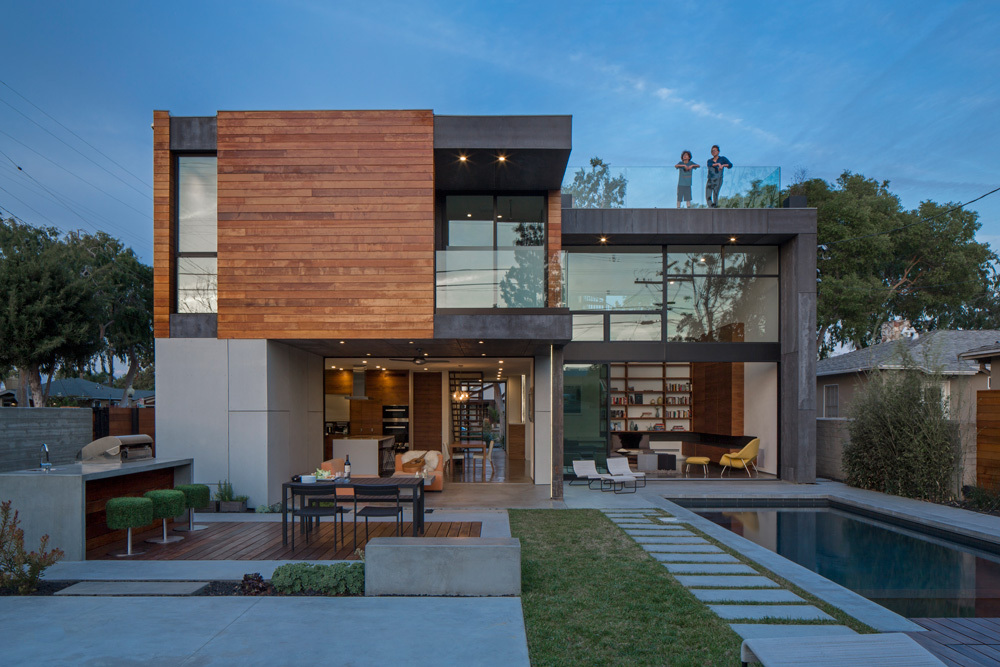

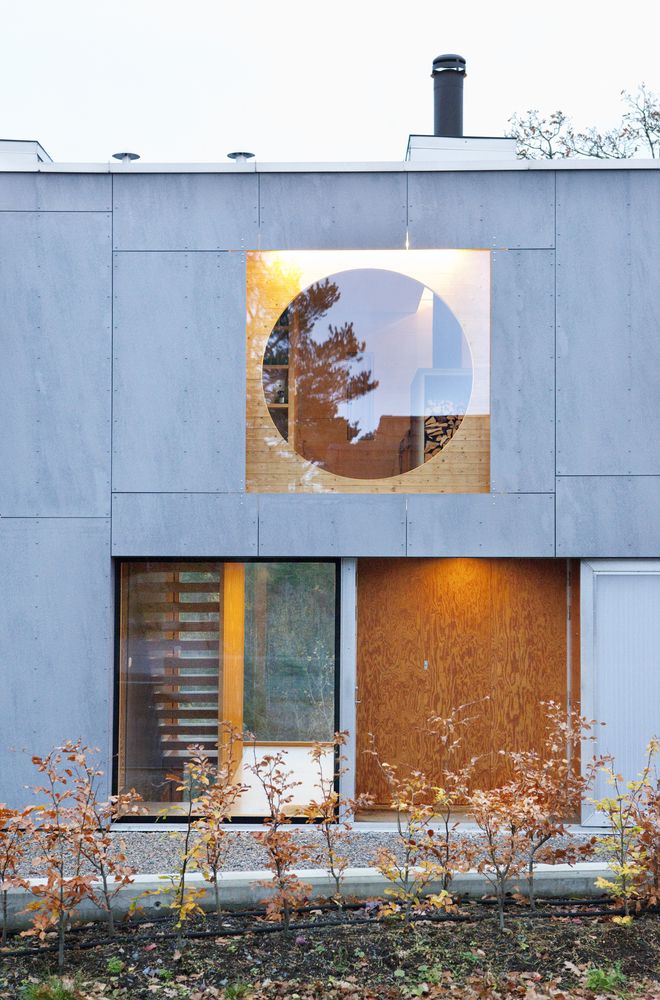








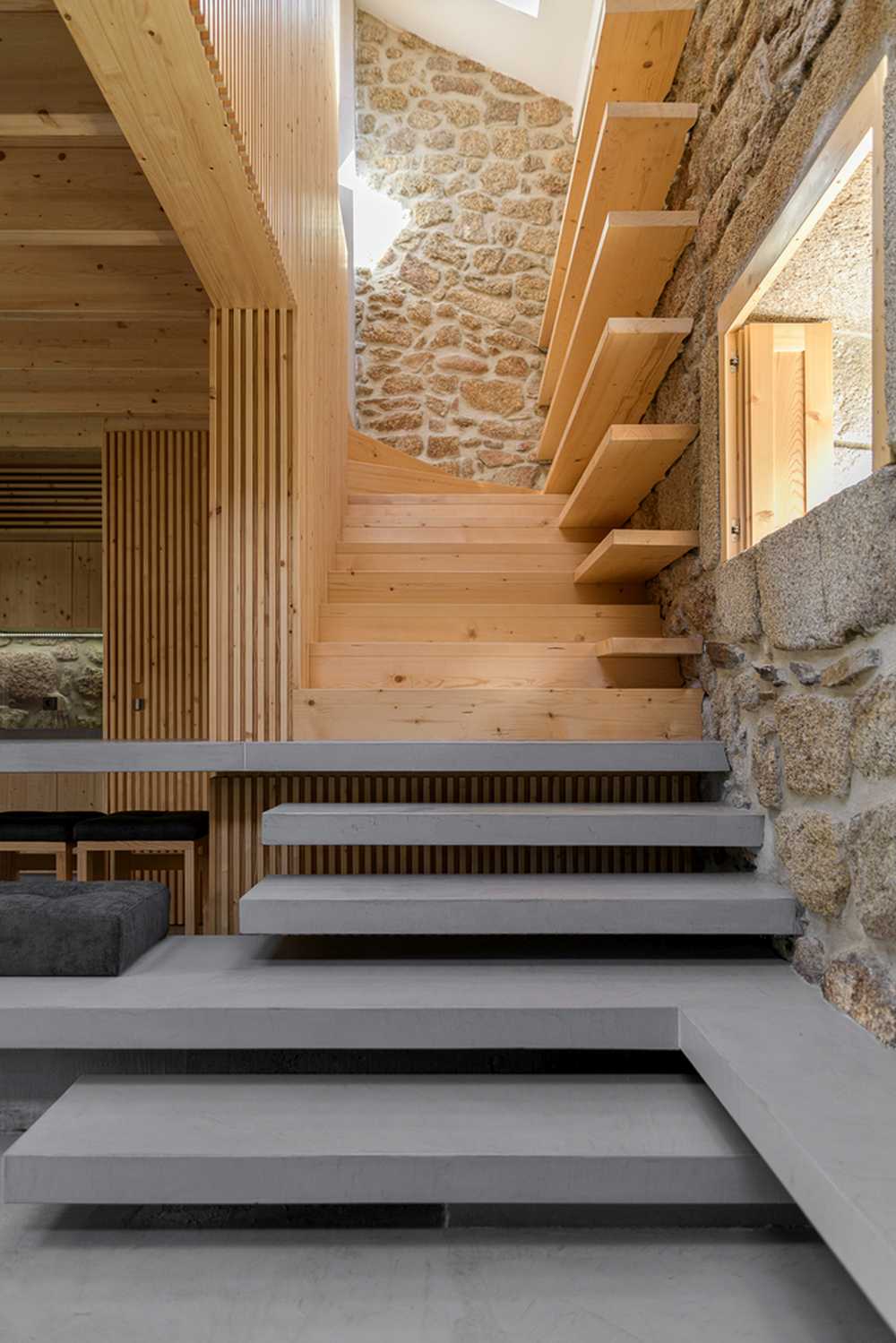


















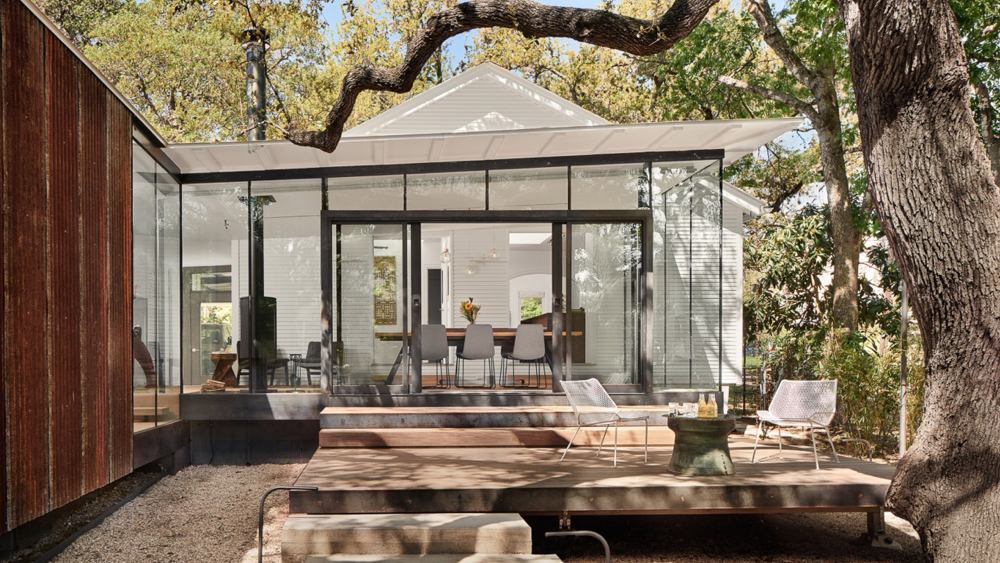






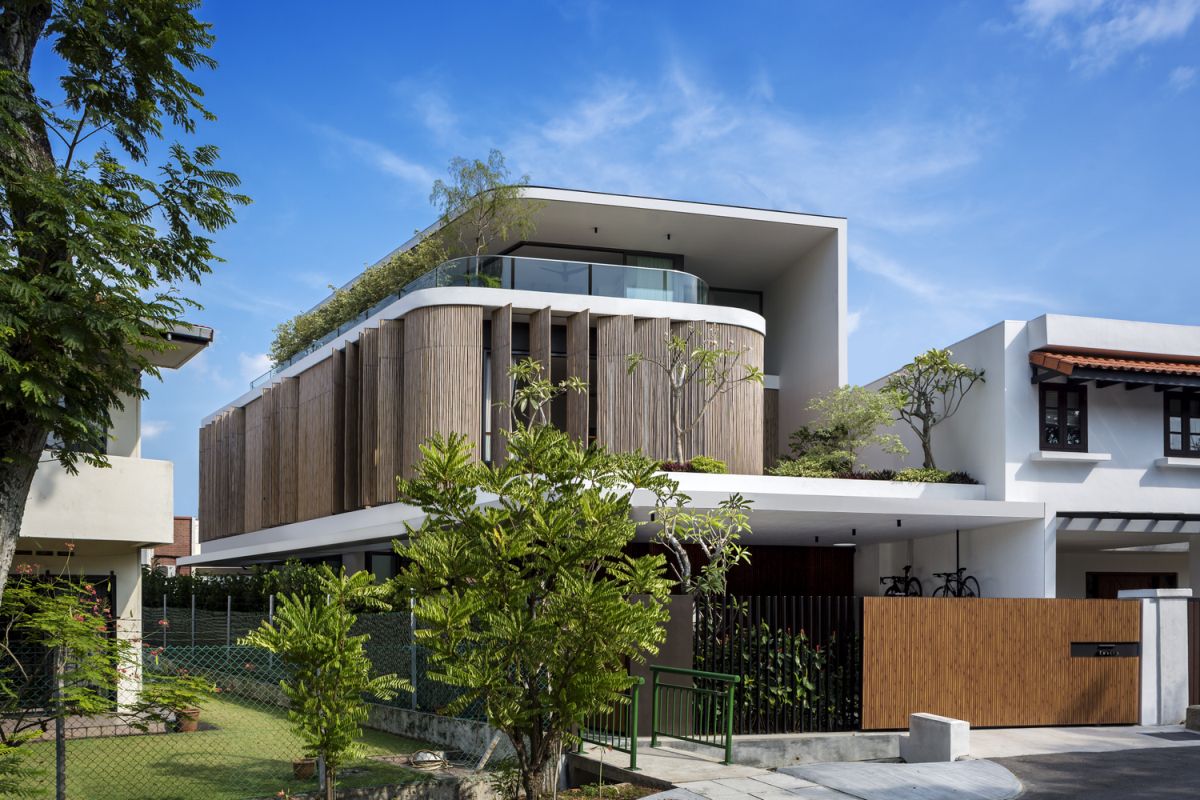










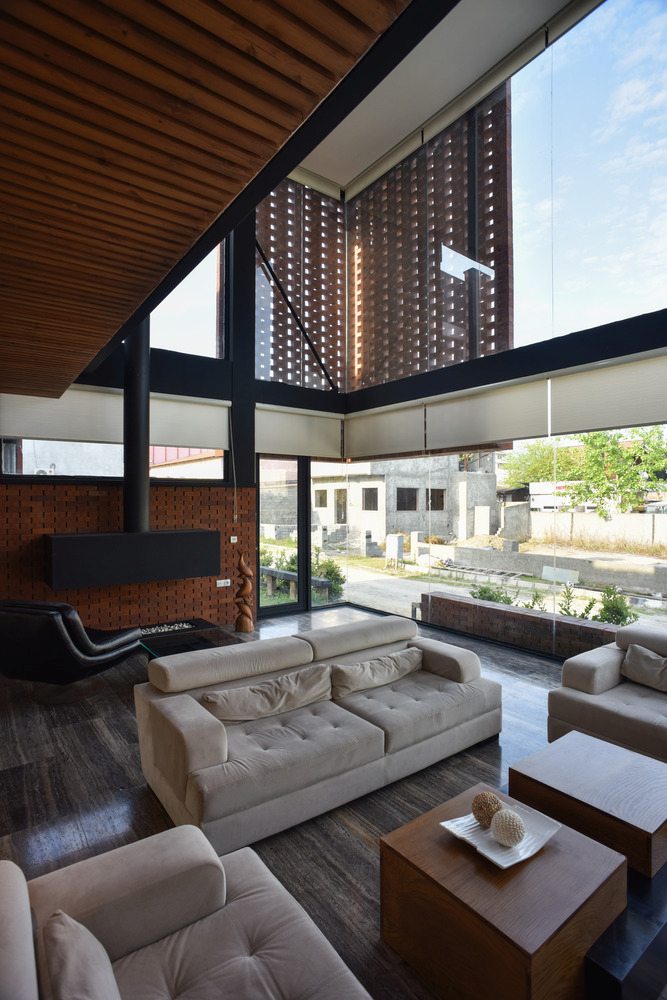































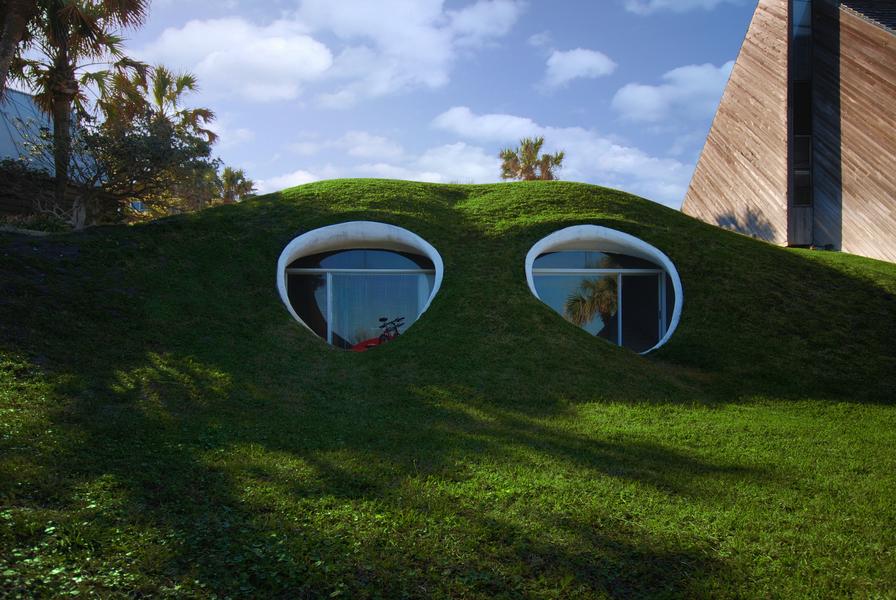





0 Commentaires